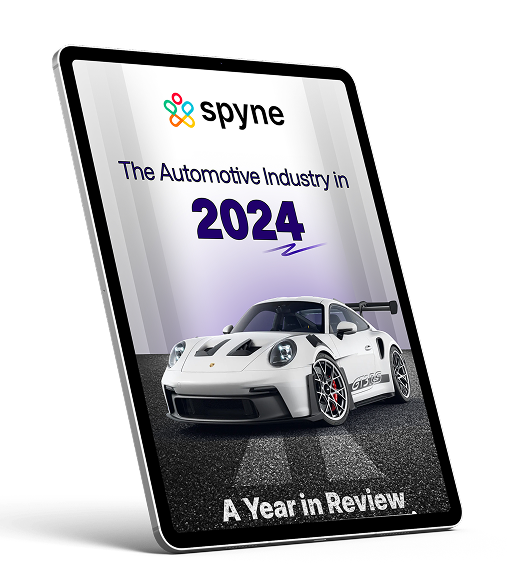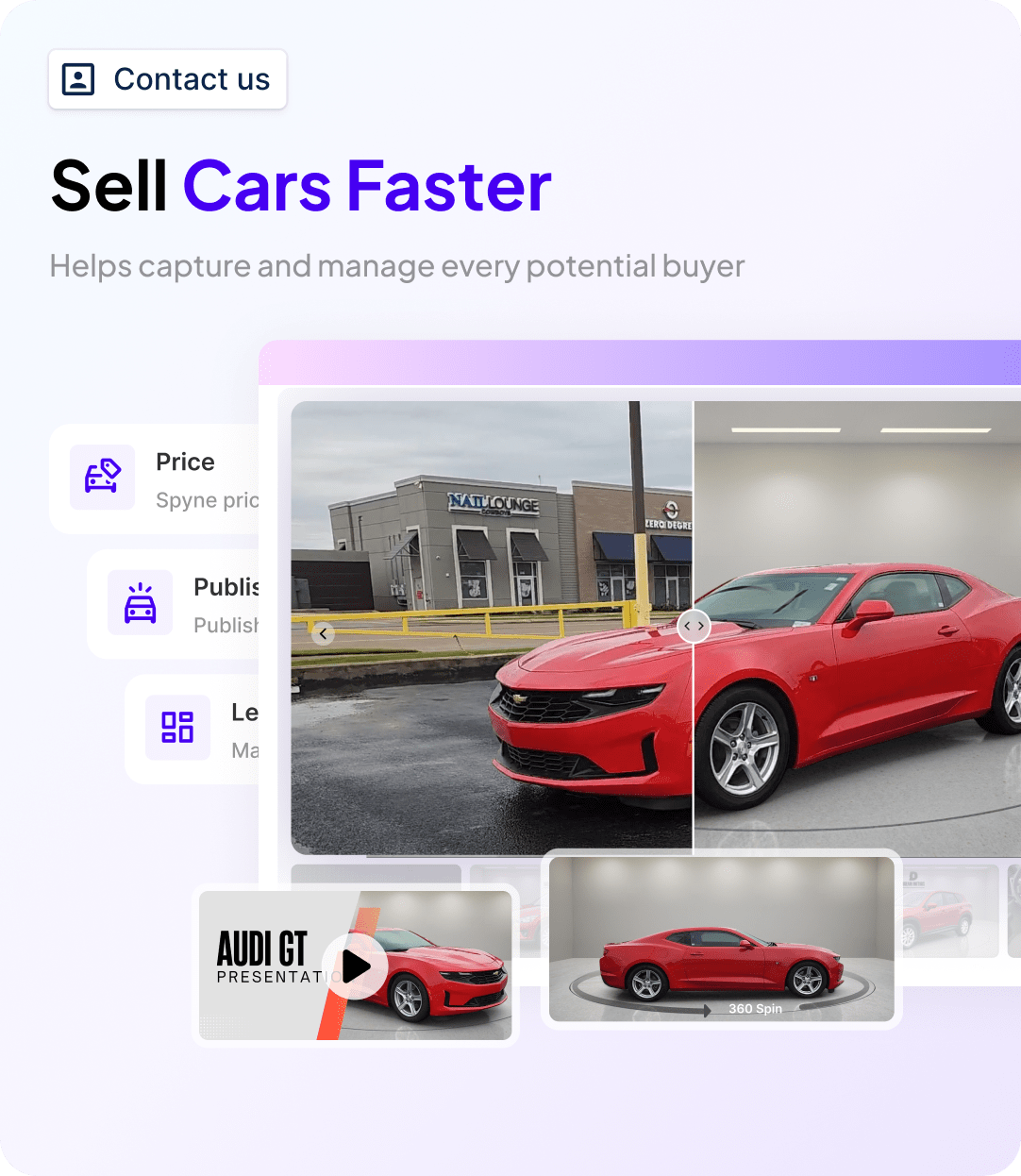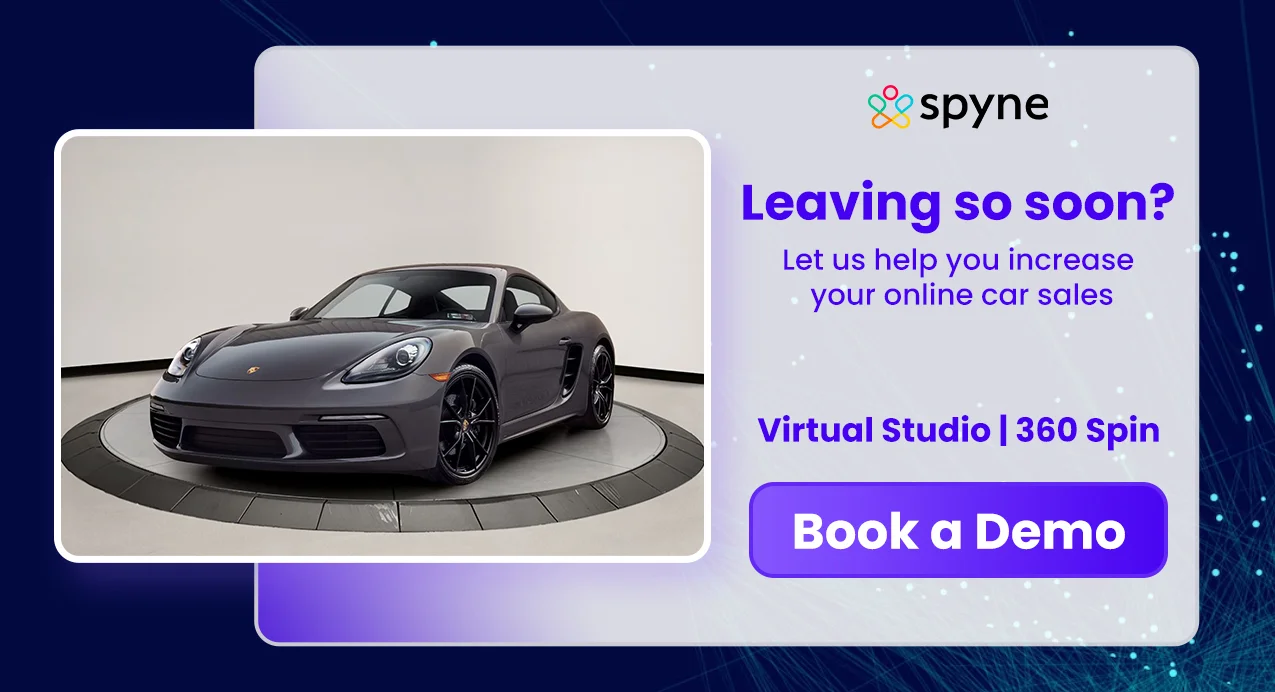If you’re in the car business right now, you’re navigating a tricky balance. On one hand, about one in four say they’re ready to buy a car entirely online.
No test drive. No handshake. Just click, pay, and wait for delivery.
On the other hand, 61% of buyers still want to close the deal at a dealership. They’re doing the research online, but they want to see the car, ask questions, maybe even pop the hood before signing anything.
This is exactly why visual merchandising matters more than it ever has. Your listings have to do two jobs: give online-first buyers the confidence to commit, and help in-store buyers make up their minds before they even walk in.
That’s where a 360 panoramic camera for car comes in. They are helping drivers park and helping dealerships present their cars better. With the right setup, you can show every angle, build trust with sharper visuals, and stand out in a sea of sameness.
In this blog, we will explore 360 panoramic car cameras in detail, what they offer beyond safety, and why they’re becoming a smart move for forward-thinking dealerships in 2025.
What Is a 360 Panoramic Car Camera?
A 360 panoramic car camera system uses multiple cameras placed around the vehicle, typically at the front, back, and on each side. These wide-angle lenses work together to create a single overhead-style view of the car and its surroundings. You’ll usually see this output on your dashboard screen while parking or maneuvering at low speeds.
The goal is simple: help the driver “see” from above, making it easier to spot curbs, corners, and nearby objects that side mirrors and rear cameras often miss. The difference in confidence behind the wheel can be immediate, especially for larger vehicles or tight urban driving.
How Does a 360-Degree Bird View Camera Work in Cars?
A 360-degree bird-view panoramic system works by combining footage from multiple wide-angle cameras placed around a vehicle to create a real-time, stitched-together top-down view. It’s designed to help you see your car from an otherwise impossible perspective, like you’re watching it from a few feet above.
Here’s a breakdown of how it works, step by step:
1. Camera Placement
Most panoramic car camera systems use four cameras:
- One at the front (usually in the grille)
- One at the rear (near the license plate)
- One on each side mirror
Each camera captures a wide-angle view of its surroundings, typically around 180 degrees.
2. Image Capture and Sync
All four cameras record video simultaneously. Each feed overlaps slightly with the others so that there’s no blind spot around the vehicle.
3. Image Processing and Stitching
The panoramic car camera system’s software then processes and corrects the raw footage:
- It removes distortion from wide-angle lenses
- Aligns the camera feeds spatially
- Blends overlapping areas to avoid seams
The result is a smooth, real-time video feed that simulates a bird’s-eye view.
4. Display on Screen
This stitched view is shown on the car’s central display, often with overlays like guiding lines or parking alerts. Some systems allow you to toggle between different angles, zoom in on specific sides, or show side-by-side views (rear + top-down) for tighter parking situations.
How This Compares to Other Tech
This process is conceptually similar to number plate recognition technology, where software has to process and analyze multiple frames in real time quickly. Both systems rely heavily on efficient image segmentation and object tracking.
It’s a technical setup that feels surprisingly intuitive in real-world use. You shift into reverse, and suddenly you’re seeing your car the way a drone might.
Key Benefits of Using a Panoramic Car Camera System
Let’s talk about what a panoramic car camera system actually improves, beyond the sales pitch.
1. Increased Spatial Awareness
This is the main reason dealerships like yours invest in panoramic car camera systems. The overhead-style view makes it easier to judge space, angle, and obstacles when parking or maneuvering. Whether it’s parallel parking in a narrow city spot or navigating a tight multi-level garage, you’re less likely to guess and more likely to get it right the first time.
2. Fewer Parking Mishaps
A panoramic camera car won’t stop someone from scraping a curb, but it will help you see the curb before you get too close. These systems are particularly helpful in low-speed situations where traditional mirrors leave gaps. You see more of your surroundings, especially near the front bumper, wheel arches, and rear corners.
This also means fewer dings and scratches on vehicles while you move them around the lot. That’s less time spent on cosmetic repairs and more cars ready for sale.
3. Faster, Smoother Parking Workflow
For both everyday drivers and staff at car dealerships, faster maneuvering matters. Whether it’s squeezing into a tight delivery bay or moving inventory between photo zones, the extra visual information cuts down on second-guessing.
It also pairs well with automation tools, especially when combined with vehicle presentation software or visual editing features like number plate blur or background masking.
4. Higher-Quality Vehicle Listings
Buyers want to see every angle. A 360-view camera helps generate better listing content. Dealerships can capture standardized, clean, and consistent visual data from the same angles every time.
When integrated with merchandising tools, it streamlines how vehicles are shown online. Some dealerships even match this with tools like number plate maker software to personalize or anonymize listings as needed.
5. Trust and Transparency
Being able to show an entire car visibly, clearly, and from every side helps build credibility. Whether someone’s browsing online or walking the lot, a clear visual experience reduces hesitation. It’s easier for a buyer to commit when they feel confident they’re not missing something.
That clarity is especially important when you consider how much of the car-buying journey now happens before anyone makes contact. Better visuals support better decision-making.
Panoramic View Car Cameras: Beyond Basic Safety
Most people hear ‘360 panoramic car camera” and immediately think of parking assistance. And yes, that’s a big part of the picture. But the role of panoramic view car cameras is expanding, especially when you look beyond individual drivers and start thinking about how dealerships, fleets, and online platforms present vehicles.
Let’s look at how they’re being used beyond the basics:
1. Consistency in Vehicle Presentation
Inconsistent lighting, background clutter, and poor angles can kill a car listing, even if the car itself is in great shape. Panoramic cameras help standardize how vehicles are photographed or recorded. You get predictable framing, uniform angles, and clean lines that make a listing look polished without needing a full studio setup.
This is particularly useful when paired with tools that allow for augmented reality in car manufacturing or online test-drive simulations. Clean input equals cleaner output.
2. Faster Image Capture for High-Volume Dealerships
Let’s say your team moves a few dozen cars through a photo bay every day. Time matters. Panoramic systems, when used smartly, can help shoot complete walkarounds or spin sets faster. That’s because the system already provides the views that manual shooting might require multiple retakes to get right.
Paired with AI-powered enhancements like automatic angle correction, shadow generation, or number plate blur, you’re saving hours over the course of a week.
3. A Stronger Visual Identity
Brand matters in car retail. The more consistent and clean your inventory looks online, the more trustworthy your dealership feels. Think of it as your visual reputation.
Panoramic cameras help set that foundation. They make it easier to use templates, match angles, and even apply overlays like dealership logos or compliant digital number plate maker formats for web listings. You look professional while selling the car.
Car 360 Panoramic View for Online Merchandising
If you’re selling cars online, and most dealerships are, whether through their own site or platforms like Autotrader or Facebook Marketplace, your images are your sales pitch. They’re the first thing buyers evaluate, sometimes before reading a single spec.
This is where a 360 panoramic car view can make a difference. It gives buyers a fuller, more natural understanding of what they’re looking at. It simulates what they’d see walking around the car in person.
1. Visual Transparency Builds Buyer Confidence
When a buyer can rotate around a vehicle and inspect its sides, they feel more in control of their decision. There’s less uncertainty about what’s being hidden or cropped out of frame. That sense of transparency builds trust, especially when paired with sharp, consistent images that don’t require mental guesswork.
It’s a subtle shift: you’re helping someone see more, which also makes them feel more confident reaching out.
2. It Sets Your Listings Apart
In a crowded listing feed, scroll-stopping visuals matter. A well-shot, interactive 360 view makes your car stand out. It’s not a gimmick; it’s a signal that your dealership cares about detail, presentation, and a better online experience.
That’s the kind of detail that adds up over dozens (or hundreds) of listings. It elevates the perception of your inventory, even when the vehicles themselves are mid-tier models.
3. Smooth Workflow for Large Inventory
If you’re managing a lot of inventory, having a repeatable, scalable process matters. 360 view tools, especially when integrated with AI photo editors, make it easier to produce consistent visual output without a full photography team.
You can also tie this into post-processing tools like:
- Number plate blur, to handle privacy on listings
- Number plate recognition technology, for syncing data across backend systems
- Number plate maker, if you’re customizing images for different sales channels
These are small pieces of a larger merchandising system. When it’s dialed in, everything from first impression to final inquiry feels more cohesive.
Conclusion
If you’re managing merchandising, your job goes way beyond uploading photos. You’re creating the first impression (sometimes the only one) that a buyer gets. And in a space where people scroll fast and compare faster, clean, consistent visuals aren’t just helpful. They’re expected.
That’s where 360 panoramic car cameras really earn their place for 360 car photography. They give you full-angle coverage, consistent framing, and cleaner, more professional output without needing to shoot every car like a photoshoot. And when you’re handling dozens (or hundreds) of cars each month, that kind of repeatable process is gold.
Pair that with tools that handle things like plate cleanup, image standardization, and background correction, and your entire workflow starts running smoother. This results in way less editing, fewer back-and-forth, and fewer listing delays.
You are improving image quality and making decisions easier for buyers. With this one upgrade. You’re giving them clarity, confidence, and a better reason to click. That’s how modern merchandising moves inventory faster.
So if you’re thinking about how to scale without compromising on quality, this is the kind of tech that quietly does the work in the background, while you focus on what comes next. As things shift toward more digital-first car buying, your listings are part of the sales conversation. Visuals built with consistency and trust in mind will always outperform ones that feel rushed or pieced together.
So if you’re thinking about what’ll keep your merchandising team sharp next quarter or next year, start here. Let your visuals carry more of the weight, because when they do, cars move faster.













